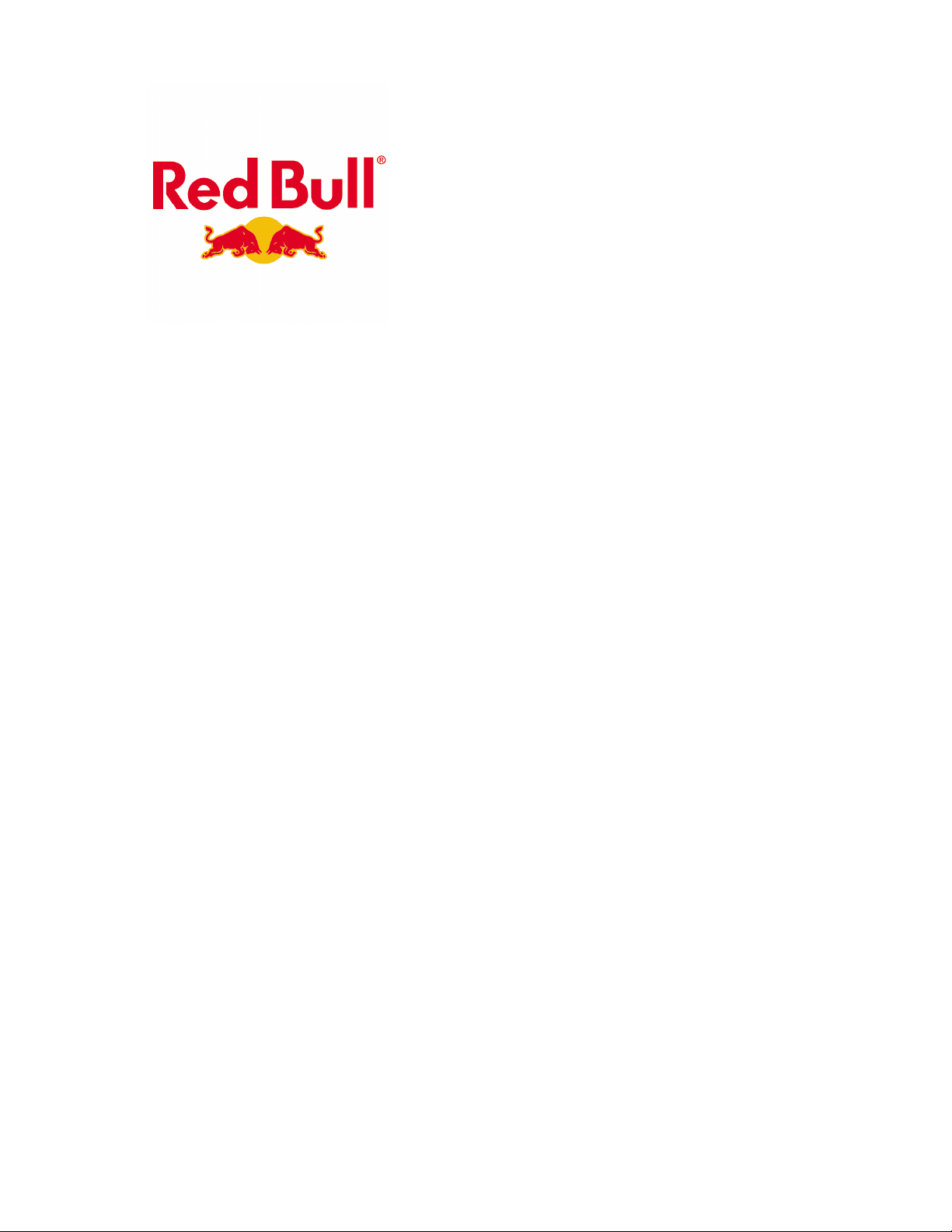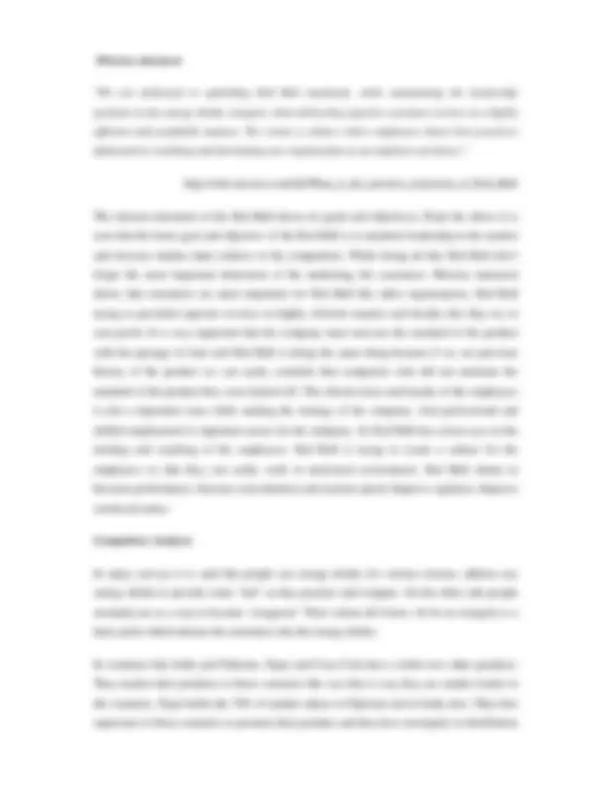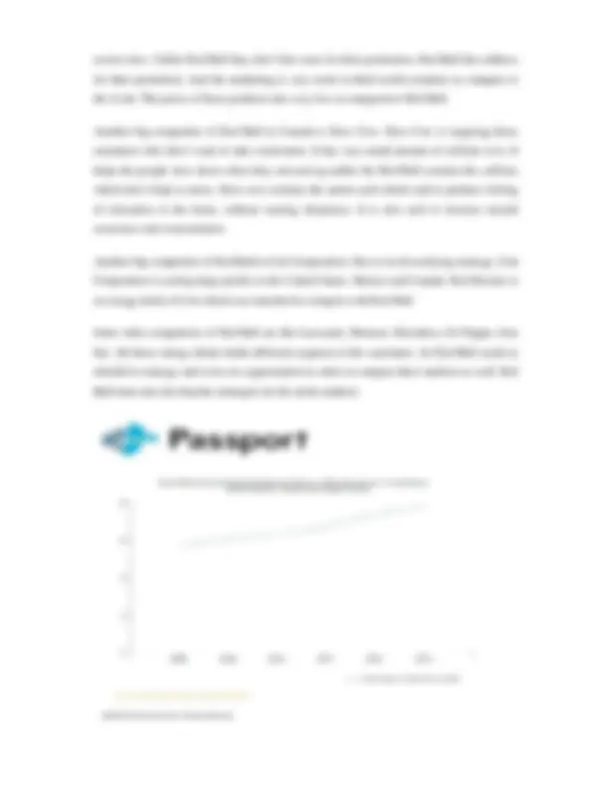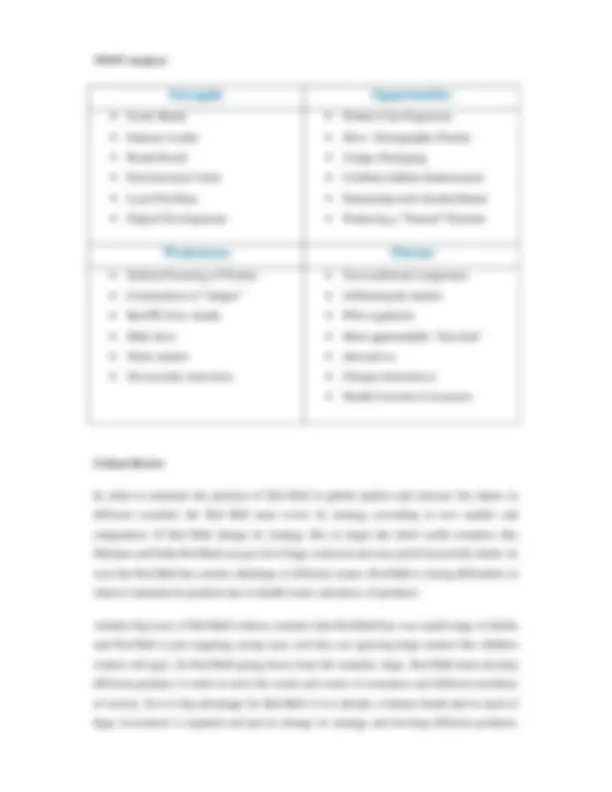





Study with the several resources on Docsity

Earn points by helping other students or get them with a premium plan


Prepare for your exams
Study with the several resources on Docsity

Earn points to download
Earn points by helping other students or get them with a premium plan
Community
Ask the community for help and clear up your study doubts
Discover the best universities in your country according to Docsity users
Free resources
Download our free guides on studying techniques, anxiety management strategies, and thesis advice from Docsity tutors
Mission statement "We are dedicated to upholding Red Bull standards, while maintaining the leadership position in the energy drinks category when delivering ...
Typology: Schemes and Mind Maps
1 / 7

This page cannot be seen from the preview
Don't miss anything!




Introduction
Red Bull is the most popular drink in the world. The market share of the Red Bull is 71% of the world market of energy drink. Red Bull produces the world's leading energy drink. More than a thousand of the million cans years are sold in nearly 100 countries. Its dominant position in the fastest-growing segment of the soft drink market in a number of countries has drawn a number of imitators. Red Bull has become a case study in successful guerrilla marketing in the United States and United Kingdom. Targeting at hip young people with active lifestyles, though the formula began as a popular energy drink for blue collar workers in different countries like Thailand. Red Bull claims to Increase performance, Increase concentration and reaction speed, Improve vigilance, Improve emotional status, Stimulate metabolism.
History
It is the adoption of Thai energy drink which translated into Red Bull. The founders of the company were Thai national Chaleo and Austrian national Dietrich. Chaleo is holding 51% of the share and Dietrich is responsible for the operation of the company. Irrespective of Red Bull if facing criticisms that it has possible health risk, it is aggressively advertised through marketing and different youth tournaments. The slogan of the Red Bull shows the clear segmentation of the Red Bull that Red Bull is targeting the young’s. The slogan of the Red Bull is It Gives You Wings. Red Bull began a revolution in the market of energy drinks.
In 1982 Austrian Dietrich Mateschitz developed an energy drink. After that he visited Thailand and found the local energy drink he mixed that drink with his drink. At that time both of partners decided the shares ratio. 49% of shares were given to Chaleo and 2% shares were given to Chaleo’s son but decided that the company will operated by Dietrich. At the same time both of partners founded Red Bull Gmb H; each investing $500,000 of savings and
taking a stake in the new company. The combination of both products was launched in 1987. The first foreign market of the Red Bull was hungry in 1992. In UK it was introduced in
Now the Red Bull is working in 60 countries and expending its activities more and more. In 2003 Red Bull introduced Red Bull sugar free.
In 2008, the most famous magazine Forbes declared the founder of the company as a being 260 richest person of the world. As Red Bull is a privately owned Austrian company of Dietrich Mateschitz. Since introducing Red Bull in 1987, Mateschitz has invested heavily in building the brand. In some countries, Red Bull is enjoying 80% market share. In the U.S, Red Bull enjoyed a 47% share of the energy drink market, and the sales are growing annually at 40%. It is the most popular world in the world that more than hundred of the drinks tried to copy Red Bull. Marketing of Red Bull and position of Red Bull in the market limited the new entry of new rivals. The in the promotion of Red Bull, slogan of Red Bull was that it increases the stamina and brain concentration, and it was the basic formula that made the Red Bull famous and it got huge appreciation from drivers specially long distance drivers.
“In terms of attracting new customers and enhancing consumer loyalty, Red Bull has a more effective branding campaign than Coke or Pepsi. Red Bull is building a beverage brand without relying on the essential equipment of a mass-marketing campaign. Perhaps the indispensable tools of marketing aren't so indispensable after all."
- Nancy Koehn, Professor of Business Administration at Harvard Business School, in 2001.
sectors also. Unlike Red Bull they don’t hire stars for their promotion, Red Bull hire athletes for their promotion. And the marketing is very week in third world countries as compare to the rivals. The prices of these products also very low as compared to Red Bull.
Another big competitor of Red Bull in Canada is Slow Cow. Slow Cow is targeting those customers who don’t want to take excitement. It has very small amount of caffeine in it. It helps the people slow down when they stressed up unlike the Red Bull contains the caffeine which don’t help in stress. Slow cow contains the amino acid which said to produce feeling of relaxation in the brain, without causing sleepiness. It is also said to increase mental awareness and concentration.
Another big competitor of Red Bull is Cott Corporation. Due to its diversifying strategy, Cott Corporation is earring huge profits in the United States, Mexico and Canada. Red Rooster is an energy drink of Cott which was launched to compete with Red Bull.
Some other competitors of Red Bull are like Lucozade, Monster, Relentless, Dr Pepper, Iron bur. All these energy drinks holds different segment of the customers. So Red Bull needs to rebuild its strategy and revise its segmentation in order to compete these markets as well. Red Bull must also develop the strategies for the niche markets.
SWOT Analysis
Critical Review
In order to maintain the position of Red Bull in global market and increase the shares in different countries the Red Bull must revise its strategy according to new market and competitors. If Red Bull change its strategy like to target the third world countries like Pakistan and India Red Bull can get rid of huge criticism and earn profit beyond the limits. In west the Red Bull has serious challenge of different issues; Red Bull is facing difficulties in order to maintain its position due to health issues and prices of products.
Another big issue of Red Bull in these countries that Red Bull has very small range of drinks and Red Bull is just targeting young man, and they are ignoring huge market like children women old ages. So Red Bull going down from the maturity stage. Red Bull must develop different products in order to meet the needs and wants of customers and different members of society. So it is big advantage for Red Bull is it is already a famous brand and no need of huge investment is required and just to change its strategy and develop different products.